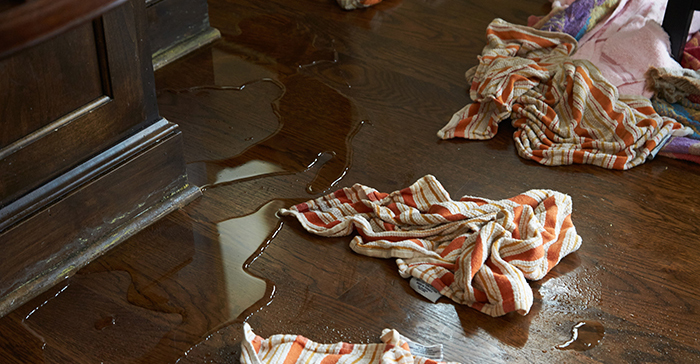The article in the next paragraphs about How to Fix a Water Damage Bathroom is exceptionally enjoyable. Don't miss it.

The bathroom is extremely vulnerable for wet buildup and also possible water damages as a result of the constant use water in it. This post uses basic evaluation methods to assist discovering water damage hazards.
The frequent use water in the washroom makes it very susceptible for moist accumulation and possible water damages. By evaluating it on a regular basis, you can minimize water associated damages.
The adhering to collection of assessments is easy to do as well as ought to be done once in every three months in order to maintain your shower room in good shape and to prevent possible water problems triggered by the bathtub, the shower, pipe joints and also plumbing, sinks, cupboards, as well as the toilet
Do not forget doing these evaluations and be detailed while doing them. Keep in mind that these straightforward evaluations can save you a lot of cash by supplying very early indicators for water damage
Bath tub and also Shower
The shower as well as tub require unique focus as well as maintenance. Examine the tiles and replace if cracked. Make sure that there is no missing out on cement between the floor tiles. Check and change split caulking at joints where the walls fulfill the floor or the bath tub. Blocked drains and also pipelines problems will certainly stop the bathtub from drying out as well as may show severe problems underneath the bathtub. Talk to a professional right away to avoid structural damages. Pay attention to stainings or soft areas around the tub wall surfaces as they may show an internal leakage.
Plumbing
Signs for water damage are difficult to spot given that most pipelines are mounted inside the walls.
Pay unique attention to floor covering and also walls dampness and spots as they might indicate an undetectable plumbing problem. Inspect dampness levels in adjoining spaces too.
Sinks and Cabinets
Sinks as well as closets are exposed to wetness and also moisture daily as well as are usually neglected. Check regularly under the sink and on the counter top above it. Fix any drip in the trap as it might recommend drainpipe problems. Browse the sink, sluggish draining pipelines might indicate a blocked drainpipe. Change sink seals if they are cracked or loose.
The Bathroom
The bathroom is an at risk water junction. Check the water lines as well as look for leakages around the commode seat, in the hose, and under the water storage tank. If you find any kind of indicators of moisture on the floor around the bathroom, look for leakages in the toilet edge and also tank seals.
Be aware that hanging toilet bowl deodorants boosts the opportunities for obstructions.
TIPS TO PREVENT WATER DAMAGE IN THE BATHROOM
The average household uses approximately 80-100 gallons of water per person per day. For a family of 4, that's almost 2,500 gallons of water a week! The largest portion of this consumption comes from bathroom use. Flushing the toilet uses the most water, followed by taking a shower or bath. With that much water running through the home, water damage in the bathroom is bound to happen. Knowing how to spot signs of a water leak is essential to preventing long-term damage. This guide provides you with tips to reduce the impact of water damage on your bathroom.
CAUSES OF BATHROOM WATER DAMAGE
- Pipe breaks are the most common cause of water damage we see in our daily jobs. The age of a pipe plays a large role in a pipe break as well as corrosion. Over time, the metal begins to break down, allowing water to escape. Frozen pipe breaks are also a concern in the winter months.
- Toilet overflows caused by paper products or children flushing inappropriate items.
- Degraded caulking around the toilet or bathtub can allow water seepage, sometimes behind the fixture, into the subfloor or walls.
- Condensation forms when the water in a pipe is cooler than the air temperature. Beads of water form on the exterior of the pipes, sometimes so much so that the water begins to drip and pool below.
- Sink or shower backups created by poor drainage.
HOW TO PREVENT WATER DAMAGE IN YOUR BATHROOM
- Inspect your toilet supply line for worn or frayed hoses and replace them as needed.
- Winterize your plumbing to prevent a frozen pipe break.
- Use vent fans to prevent condensation that can lead to mold growth.
- Routinely check and replace degraded caulking around your toilet or bathtub.
- Increase the temperature in your toilet tank and insulate your pipes during the warm summer months to keep condensation from forming.
- Use child safety locks on the toilets.
- Flush only toilet paper. "Flushable" wet wipes are actually not good for your plumbing system. Additionally, feminine hygiene products should not be flushed.
- Prevent water from escaping the tub or shower. Make sure shower curtains are in good condition. Inspect shower doors and replace the seal strip if necessary.
- Wipe up any water that accumulates on the floor and use bath mats. Water left to sit can cause damage to the tiles and flooring.
- Refrain from using bath products containing heavy oils to avoid a clogged drain.

I came across that page on How to Fix a Water Damage Bathroom when doing a lookup on the search engines. Are you aware of someone else who is intrigued by the subject? Do not hesitate to promote it. Thank you for your time. Please stop by our website back soon.
Click
Comments on “How to Help Prevent Water Damage in Your Bathroom”